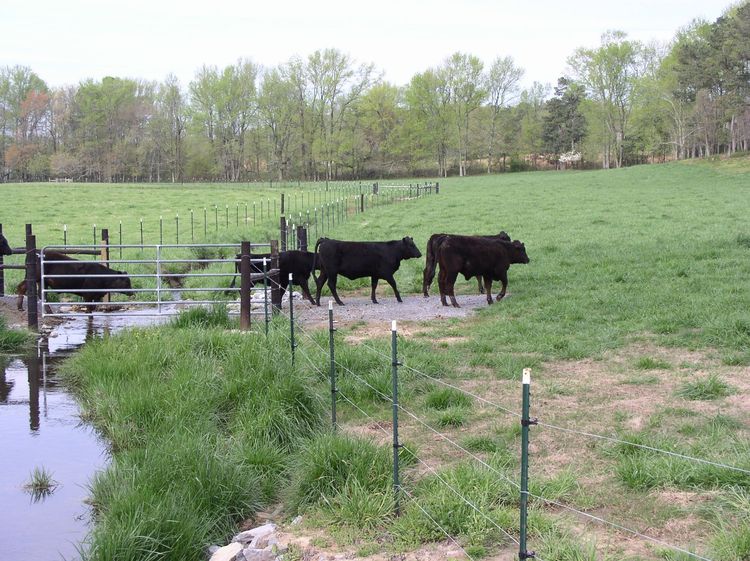



Wading into Grazing
Michigan’s rivers provide residents with natural surface drainage for fields, transportation, recreation opportunities, and domestic and industrial water sources.They may also provide pastures with a source of water and cooling for animals. However, increased scrutiny on the impact of animal agriculture on surface water continues to grow in the state.
Michigan has several watersheds with impaired waters, or waters that no longer can provide some of the basic functions you would expect like recreation, wildlife habitat, and drinking water due to impacts of turbidity, pathogens, nutrients, organic enrichment, and sediment deposition. You can view a map of E. coli impacted watersheds in Michigan.
Generally, grazing does not have significant effects on sediment or nutrients in water bodies, but that doesn’t mean grazing will escape public scrutiny. Research has shown us that grazing can have negative water quality impacts when animals are concentrated near water bodies.
Additionally, when they have unrestricted long-term access to surface water, sediment and nutrient loadings can be high, according to researchers K. N. Brooks and T. L. Thurow.
Water quality impacts can come from the degradation of soil quality. Increased soil compaction leads to less water infiltration through the soil profile and increases the amount of the water that drains and erodes the pasture. Increased runoff impacts water quality as the nutrients and sediment wash off the pasture into nearby waterways.
Furthermore, unmanaged grazing can cause the loss or alteration of riparian vegetation shifting the habitat away from native species preferences. It can also increase stream-bank erosion altering sediment loads in the stream, destroying habitat for fish and invertebrates.
Best Management Practices for Grazing
Using rotational grazing or managed grazing can reduce the threat of runoff and erosion from pastures by reducing compaction and increasing infiltration. A helpful resource for adopting rotational grazing can be found in Greener Pastures: Managed Grazing (E2785). Rotating pastures can help maintain healthier pastures for animals and the bottom line.
Including a source of off stream water is a great addition to the pasture, however studies show that cattle will still choose to loaf in streams during periods of warm weather. Rotational grazing can reduce this contact. Another consideration is the size and shape of pastures.
Long narrow pastures that run along surface water are more likely to experience contamination than shorter pastures of the same area according to Jim Russell, professor emeritus of animal science at Iowa State University. Additional shade in the pastures can help alleviate some of the animals desire to cool themselves by loafing in the surface water.
Riparian buffers with stabilized crossings are also a great practice for reducing the impact of animals on surface water. Riparian buffers are characterized by forested or scrub areas that are difficult for the cattle to traverse because of the dense vegetation next to the water. Animals are less likely to enter the stream in these areas and will choose to use the stabilized crossing.



